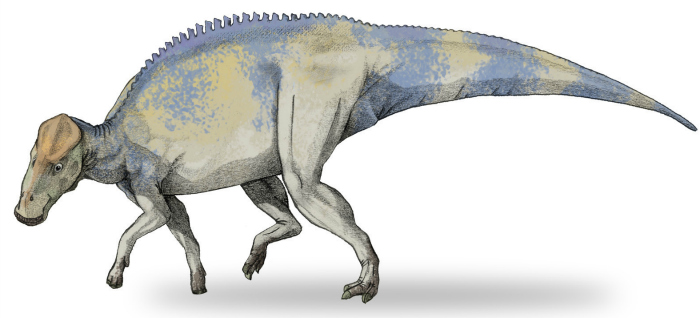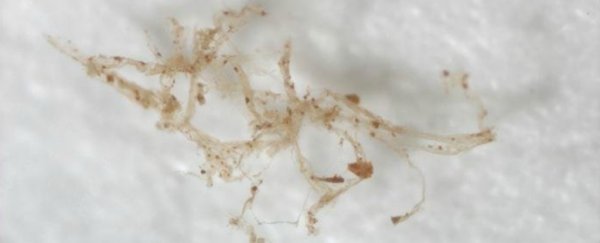Researchers have confirmed that vessel-like structures found in an 80-million-year-old dinosaur fossil are indeed blood vessels from the original animal, and not the result of biofilm or other contaminants.
While previous research has suggested that blood vessels could be preserved over millions of years, scientists were understandably skeptical when they first spotted the structures. But now their existence has been confirmed, and can we take a second here to appreciate just how insane it is that there are scientists out there who've seen dinosaur blood vessels with their own eyes?
The vessels were first spotted in a demineralised a piece of leg bone from a Brachylophosaurus canadensis – a 9-metre-long hadrosaur that roamed Montana around 80 million years ago – by molecular palaeontologist Tim Cleland while he was still a graduate student.
To get an idea of what Brachylophosaurus canadensis looked like, here's a restoration of what the Brachylophosaurus family looked like:
 Dropzink~commonswiki/Wikimedia
Dropzink~commonswiki/Wikimedia
Now a researcher at the University of Texas at Austin, Cleland and his team have since managed to identify several distinct proteins trapped inside the vessels, including myosin, which is found in the smooth muscles that make up the walls of blood vessels.
To make sure that what they were seeing really did belong to a dinosaur, the team then compared the proteins in the fossilised blood vessels to those found in the relatives of dinosaurs, such as chickens and ostriches. Amazingly, the peptide sequences found in both the ancient and modern samples matched those found in the blood vessels.
"This study is the first direct analysis of blood vessels from an extinct organism, and provides us with an opportunity to understand what kinds of proteins and tissues can persist and how they change during fossilisation," said Cleland. "This will provide new avenues for pursuing questions regarding the evolutionary relationships of extinct organisms, and will identify significant protein modifications and when they might have arisen in these lineages."
Cleland was able to identify the ancient proteins using a process known as high resolution mass spectrometry, which is basically where a sample is bombarded with electrons in order to visualise its structure. His technique can now be used to understand more about the proteins in a range of fossilised material.
"Part of the value of this research is that it gives us insight into how proteins can modify and change over 80 million years," said one of the researchers Mary Schweitzer, a molecular palaeontologist from North Carolina State University. "It tells us not only about how tissues preserve over time, but gives us the possibility of looking at how these animals adapted to their environment while they were alive."
The research has been published in the Journal of Proteome Research.
